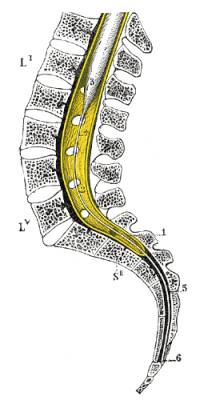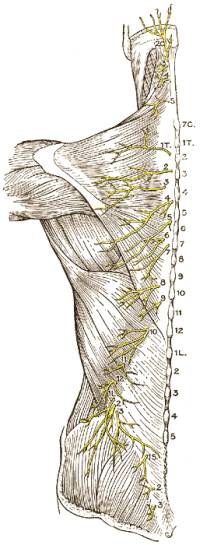CST is a "Complementary" therapy, and does not replace the services of your GP or consultant. All the opinions expressed here are based on my clinical experience applying CST over a 20 year period. Please also note that everyone is different, so it is not possible to be prescriptive about either how a particular condition might be treated, or how long that might take. The effects of a CST treatment are usually quick and long-lasting for uncomplicated remedial work.
Although CST is a whole-body approach, the fascial glide and unwinding techniques are particularly well suited to working with local injuries. And like all CST techniques are extremely light and safe.
I have seen many people come to my clinic wanting some kind of remedial treatment for a wide range of conditions... Broken bones, fractures, whiplash, complex injuries from road traffic accidents (RTAs), sprains, strains, pulled muscles and to help recovery from a wide range of non-accidents such as operations, tooth extractions, orthodontics, giving birth and cosmetic surgery. Many of these involve scar tissue, which I have particular expertise in helping.
Movement is a vital part of recovery
The total of 50 years of medical research into how best to heal injuries, breaks etc is that they must be moved as soon as possible, and normal usage returned as soon as possible. This is not always so easy, and often the quality of movement changes due to pain or fear of the injury. I can show you safe and easy-to-learn self-help techniques which can substantially help healing to occur - even if you are wearing a plaster cast.
If there is inadequate regular movement to mobilise a damaged area, old scar tissue appears to collect adhesions around it over time, and so effectively grows bigger. When this mass of adhesion exceeds the body's adaptive capacity, it causes pain somewhere - not necessarily at the scar site. So I see quite a few cases of 10-20 year old abdominal operation scars which are now causing headaches, shoulder pain, and all kinds of other miscellaneous mayhem. In simple cases (i.e. where it is only the scar adhesion causing a problem), just one or two treatments is enough to clear the adhesions and return local mobility.
Recovery from infections
Physical recovery from infections such as (post-) Meningeal Syndrome, pleurisy, influenza, etc appears to have been assisted by CST when people have come for help with these conditions. I have found these to be one possible cause for a wide range of musculoskeletal problems, migraines and other problems. CST also seems to work well regardless of how long ago injuries, infections etc occurred, though the treatment time is usually longer for older adhesions.
Remedial work for RTAs/ car accidents
My experience of whiplash is that it responds very quickly to CST, and more often than not patients have reported some noticeable improvement after the first treatment. I have treated people who have lived with whiplash pain and immobility for a decade or more, and usually there is quite rapid return to normal neck movement. I have also worked with broken necks, skull fractures and spinal fusion operations. CST treatment of breaks is possible either after years or very early after the accident, and is very safe. Any break or injury that is protected by a cast or brace can be worked usefully and safely from the other (undamaged) parts of the body, long before any normal physiotherapy programme would be started, and this almost always seems to accelerate recovery time.
Breaks and fractures
In the case of broken bones requiring casts, I can often work from either end of the cast. An existing plaster cast in particular is really useful... If the correct movements are made, the cast provides an opportunity for you to work the limb against resistance, whilst the plaster also restricts the range of motion (and so prevents damage). All this has to take into account the individual details of inflammation so that recovery is helped and not hindered. Broken noses seem to be rather more hit and miss (please excuse the pun). Some seem to be permanently displaced - though again treatment usually results in them feeling substantially more comfortable. In one instance, three treatments saw the nose return to its original shape and position. Two factors that might have helped were (i) the person was particularly healthy, and (ii) we started treatment just a couple of days after the break occurred.
Bones tend to patch themselves temporarily within 2-3 days with a calcified unstructured mass. After that, both the bone and surrounding tissues need to have as close as possible to normal movement, loading and usage so that they repair themselves with the correct structure and alignment of tensile and compressive elements. As a general rule, the sooner that normal functional movement can start, the better the healing and the shorter the time to full recovery. If the injury is not worked (i.e. is only rested and protected) in the first few weeks, then it will take a lot longer to return it to normal use and the unstructured patch will harden in the position it first started to form. This basic fact has to be sensibly balanced against the necessity to keep inflammation to a minimum.
Most people I see are coming for CST treatment because they have a problem with a fracture or sprain not healing (i.e. I see them several months after the event). In most cases, this appears to be caused embedded shock in the injury site, and after applying suitable techniques to dissipate this shock, healing appears to resume normally.
Torn ligaments, muscular strains
Strains, sprains and other muscular pulls in limbs are worked with using the same techniques applied when working on fractures, and often just one treatment has resulted in a greater sense of ease (though more than one treatment is often useful). There is also a lot can be done for discomfort that occurs both before and after giving birth.
Wisdom tooth extractions and the face
These can be very simple and straightforward, or they can be a major trauma. In my experience, wisdom tooth extractions and orthodontics are often the factor that starts a long history of shoulder and hip misalignment and consequent knee pain, back pain and other structural problems.
There are standard techniques in CST for working with the bones of the face, and these often seem to be able to help the occlusion ("bite" or the way that your upper and lower teeth meet each other) be more aligned. This improved bite often appears to have a significant and often immediate impact on structural problems in all of the rest of the body. Apart from a few areas of "bumper bar" (the cheeks and eyebrow ridges), much of the face is constructed like a crumple zone in a car, with many of the bones being as thin as a sheet of paper. I have observed many times that a return to normal mobility of the bones of the face (i.e. the Cranial rhythm is moving freely through the maxilla, ethmoid, vomer and nasal conchae) is accompanied by an experience of softness in the face, more room on the mouth, and the TMJ often settles into a more stable position.
 Remedial work
Remedial work






